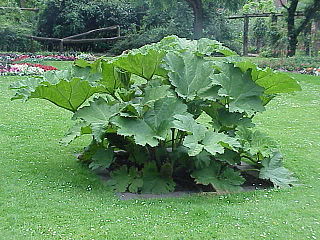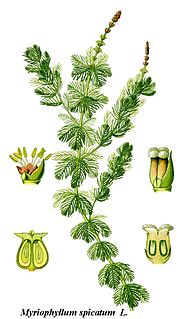Related Research Articles

The dicotyledons, also known as dicots, are one of the two groups into which all the flowering plants or angiosperms were formerly divided. The name refers to one of the typical characteristics of the group, namely that the seed has two embryonic leaves or cotyledons. There are around 200,000 species within this group. The other group of flowering plants were called monocotyledons or monocots, typically having one cotyledon. Historically, these two groups formed the two divisions of the flowering plants.

The Aristolochiaceae are a family, the birthwort family, of flowering plants with seven genera and about 400 known species belonging to the order Piperales. The type genus is Aristolochia L.

Oxalidales is an order of flowering plants, included within the rosid subgroup of eudicots. Compound leaves are common in Oxalidales and the majority of the species in this order have five or six sepals and petals. The following families are typically placed here:

The Crossosomatales are an order, first recognized as such by APG II. They are flowering plants included within the Rosid eudicots.
Berberidopsidales is an order of Southern Hemisphere woody flowering plants. The name is newly accepted in the APG III system of plant taxonomy. APG II system, of 2003, mentions the possibility of recognizing the order, as comprising the families Berberidopsidaceae and Aextoxicaceae. However, APG II left the families unplaced as to order, assigning them to the clade core eudicots. The APG III system of 2009 formally recognized the order.

The Gunnerales are an order of flowering plants. In the APG III system (2009) and APG IV system (2016) it contains two genera: Gunnera and Myrothamnus. In the Cronquist system (1981), the Gunneraceae were in the Haloragales and Myrothamnaceae in the Hamamelidales. DNA analysis was definitive, but the grouping of the two families was a surprise, given their very dissimilar morphologies. In Cronquist's old system, and Takhtajan's (1997), the Gunneraceae were in the Rosidae, and the Myrothamnaceae were in the Hamamelids. In modern classification systems such as APG III and APG IV this order was the first to derive from the core eudicots.

The Buxales are a small order of eudicot flowering plants, recognized by the APG IV system of 2016. The order includes the family Buxaceae; the families Didymelaceae and Haptanthaceae may also be recognized or may be included in the Buxaceae. Many members of the order are evergreen shrubs or trees, although some are herbaceous perennials. They have separate "male" (staminate) and "female" (carpellate) flowers, mostly on the same plant. Some species are of economic importance either for the wood they produce or as ornamental plants.

Nelumbonaceae is a family of aquatic flowering plants. Nelumbo is the sole extant genus, containing Nelumbo lutea, native to North America, and Nelumbo nucifera, widespread in Asia. At least four other genera, Nelumbites, Exnelumbites, Paleonelumbo, and Nelumbago, are known from fossils.

The eudicots, Eudicotidae or eudicotyledons are a clade of flowering plants mainly characterized by having two seed leaves upon germination. The term derives from Dicotyledons.

The rosids are members of a large clade of flowering plants, containing about 70,000 species, more than a quarter of all angiosperms.

The Achatocarpaceae are a family of woody flowering plants consisting of two genera and 11 known species, and has been recognized by most taxonomists. The family is found from the southwestern United States south to tropical and subtropical South America.

Haloragaceae is a eudicot flowering plant family in the order Saxifragales, based on the phylogenetic APG system. In the Cronquist system, it was included in the order Haloragales.

Aphloia is a genus of flowering plants that contains a single species, Aphloia theiformis, the sole species of the monogeneric family Aphloiaceae. It is a species of evergreen shrubs or small trees occurring in East Africa, Madagascar, the Mascarene Islands and the Seychelles.
Peter Francis Stevens is a British botanist born in 1944.

Lepidobotryaceae is a flowering plant family in the order Celastrales. It contains only two genera, each with a single species: Lepidobotrys staudtii and Ruptiliocarpon caracolito.

Mesangiospermae is a clade of flowering plants (angiosperms), informally called "mesangiosperms". They are one of two main groups of angiosperms. It is a name created under the rules of the PhyloCode system of phylogenetic nomenclature. There are about 350,000 species of mesangiosperms. The mesangiosperms contain about 99.95% of the flowering plants, assuming that there are about 175 species not in this group and about 350,000 that are. While such a clade with a similar circumscription exists in the APG III system, it was not given a name.

Stemonuraceae is a eudicot family of flowering plants.

The superrosids are members of a large clade of flowering plants, containing more than 88,000 species, and thus more than a quarter of all angiosperms.

The superasterids are members of a large clade of flowering plants, containing more than 122,000 species.
References
- ↑ Based on:
Stevens, P.F. (2001–2014). "Trees". Angiosperm Phylogeny Website. Archived from the original on 2015-05-21. Retrieved 2014-11-17.
Stevens, P.F. (2001–2016). "Eudicots". Angiosperm Phylogeny Website. Retrieved 2014-11-17.